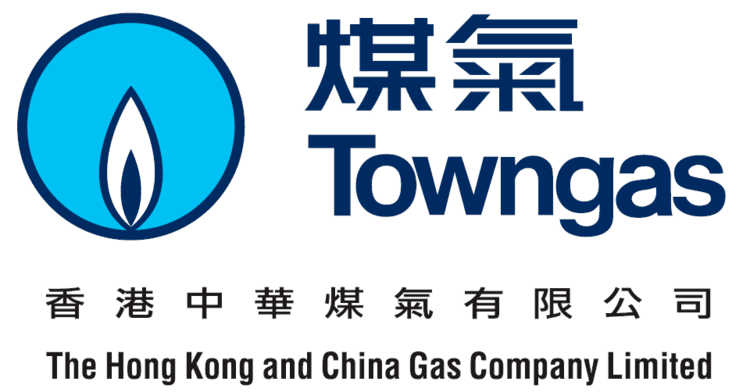Type Public Net income HKD 7,109m (2014) Revenue 31.62 billion HKD (2014) Number of employees 2,331 (2014) | Headquarters Hong Kong Founded 31 May 1862 | |
 | ||
Traded as SEHK: 0003,OTC Pink: HOKCY Key people Lee Shau Kee, ChairmanAlfred Chan, Managing Director Products Gas supply, water supply, emerging environmentally-friendly energy, telecommunications Stock price 0003 (HKG) HK$ 15.72 +0.18 (+1.16%)3 Apr, 4:08 PM GMT+8 - Disclaimer Profiles | ||
The hong kong and china gas company limited towngas cooking centre mr siu kong wai amigo
The Hong Kong and China Gas Company Limited (Chinese: 香港中華煤氣有限公司), commonly known as Towngas (traditional Chinese: 煤氣; simplified Chinese: 煤气; Jyutping: mui4 hei3; pinyin: Méiqì), is the sole provider of towngas in Hong Kong. Founded in 1862, it is one of the oldest listed companies in the territory.
Contents
- The hong kong and china gas company limited towngas cooking centre mr siu kong wai amigo
- Qiesc 2015 the hong kong and china gas company limited
- History
- Gas production and network
- Usurpation by ultimate parent
- Exploration operations
- Accidents
- References
It is the leading public utility in Hong Kong, and supplies towngas to 85% Hong Kong households, and also to commercial and industrial customers. It has over 200 projects in mainland China including city-gas, water supply, emerging environmentally-friendly energy and telecommunications. It also engages in property development projects, namely International Finance Centre (15% share), Grand Promenade (50% share) and Grand Waterfront, in Hong Kong with its largest shareholder.
According to official documents, Henderson Land Development Co. Ltd (HLD) is the company's largest shareholder, owning 41.51% of the issued shares of the company as at 31 December 2014. Lee Shau Kee, chairman of HLD, is also the chairman of the company.
Qiesc 2015 the hong kong and china gas company limited
History
In February 1862, the concession to supply gas to the city of Victoria (the centre of which now referred to as Central), was obtained from then governor Sir Hercules Robinson by William Glen, a newcomer to the gas industry. Incorporation took place on 3 June 1862 and by 3 December 1864 that year there were 15 miles (24 km) of pipes and 500 gas lamps along Queen's Road and Upper Valley Road. In Kowloon, residents continued to rely on candles and oil lamps until gas was laid on 28 years later. The company's original generating plant, the first in Asia, stood on the waterfront at West Point near Whitty Street and provided gas for lighting to government offices and army barracks as well as Jardine's offices, the The Hong Kong Dispensary and the Hong Kong Hotel. The plant was coal fired and produced 120,000 cubic feet (3,400 m3) of gas per day. It was run directly from Britain until 1954 when a majority shareholding was purchased by local firm Wheelock and Marden Company Limited who moved the company's registered domicile from the UK to Hong Kong.
As of 2011, the only surviving four gas lamps installed by the company are situated at the top and bottom of a flight of broad granite steps linking Ice House Street and Duddell Street. These are still maintained by Towngas, while the site is one of the Declared monuments of Hong Kong.
Gas production and network
The company imports natural gas from Australia by sea and stores it at the Dapeng liquefied natural gas (LNG) terminal in Shenzhen under a 25-year contract. A 34-kilometre (21 mi) submarine pipeline connects the Dapeng terminal to Towngas' Tai Po plant. The Tai Po plant produces 97% of town gas while the remaining 3% is produced at the Ma Tau Kok plant. The two plants cover 1.8 million households via a network of more than 3,500 kilometres (2,200 mi) of pipelines throughout Hong Kong. Treated gas from landfill sites is also utilised as fuel to reduce emission of greenhouse gases. In Hong Kong, town gas is produced from naphtha and natural gas. Its major components are hydrogen (49%), methane (28.5%), carbon dioxide (19.5%) and a small amount of carbon monoxide (3%) .
Usurpation by ultimate parent
On 3 October 2007, HLD proposed to pay market value only to gain control of Towngas. The 39.06 percent stake in Towngas held by subsidiary Henderson Investment was valued at HK$42.86 billion in cash and convertible notes for the purposes of the transaction. Minority shareholders of Henderson Investment, who together hold 30.73%, would receive 204.1 million Henderson Land shares and HK$1.19 billion in cash.
The offer was considered by analysts to be favourable to the Company, and shareholder activist David Webb criticised the deal saying Henderson was acquiring the stake on the cheap, without paying any control premium to minority shareholders of Henderson Investment. Webb further criticised the nature of the offer as a back-door privatisation of Henderson Investment, which would virtually be a shell company after the transfer of the stake.
On 7 November, Henderson sweetened the offer to appease minority shareholders by increasing the cash portion to HK$2.24 per share, who threatened to vote down the proposal. On 7 December 2007, Henderson secured shareholders' support for the usurpation.
Exploration operations
Accidents
On 11 April 2006, an explosion caused by leaking towngas in Ngau Tau Kok killed two people and injured nine more.
